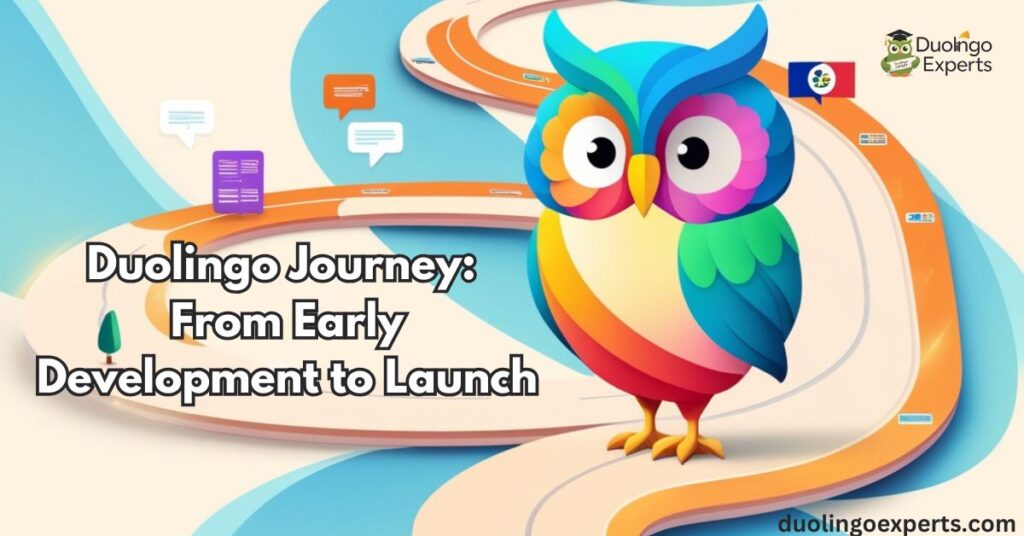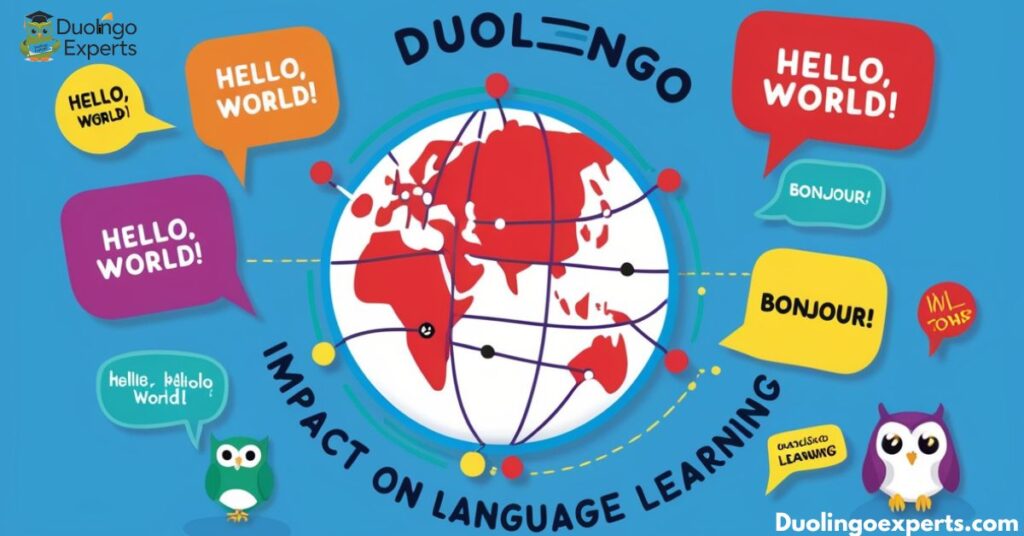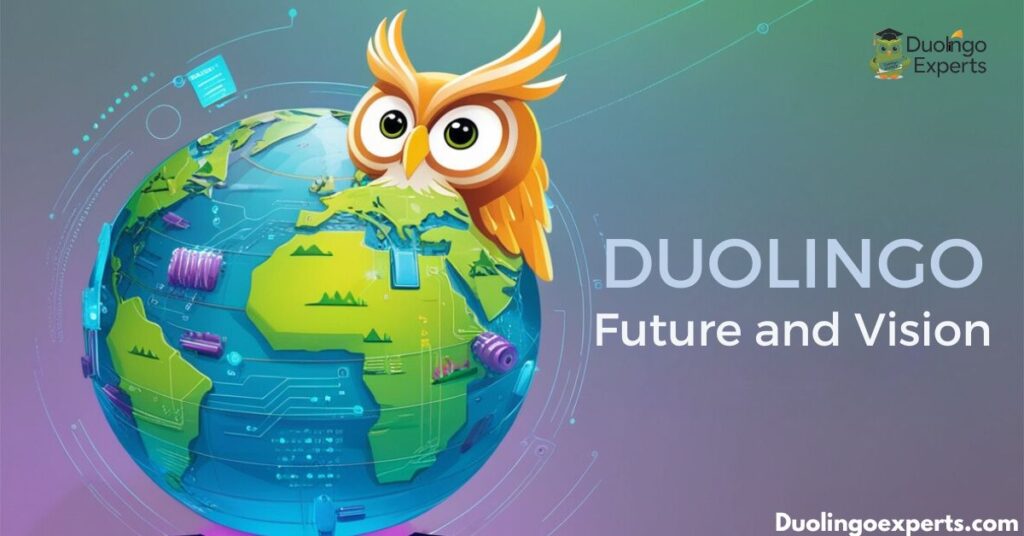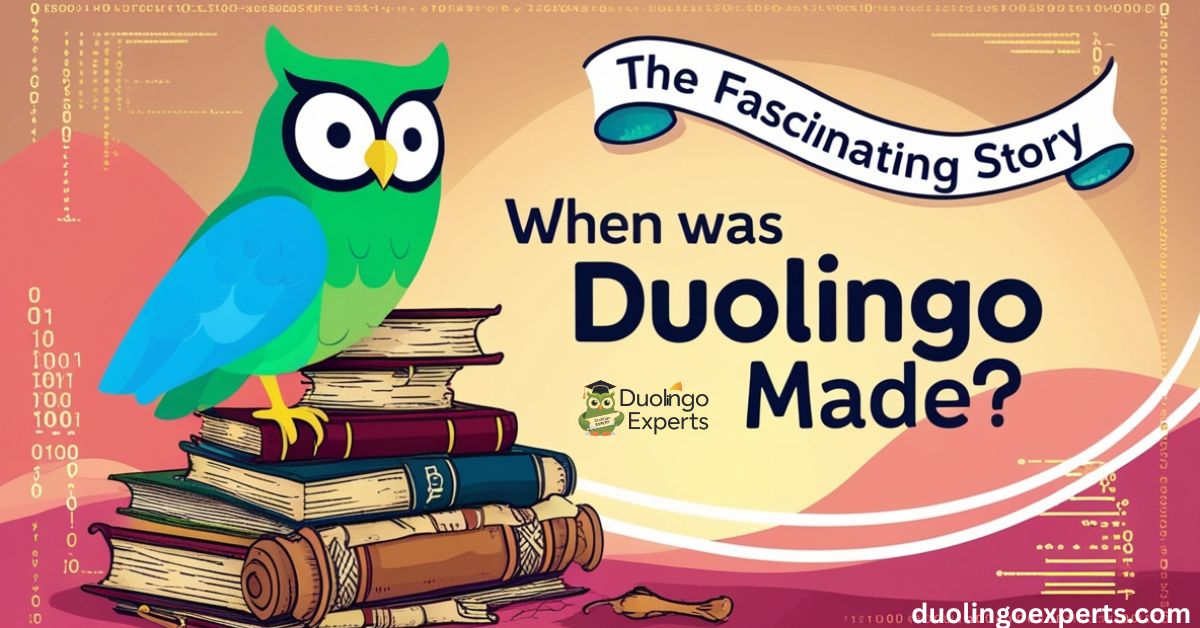Duolingo has become a household name in the world of language learning apps, changing the way millions approach acquiring new languages. With its fun, gamified interface and access to a wide range of languages, Duolingo has made learning more accessible than ever before. But when was Duolingo made, and how did it go from a simple idea to a popular educational platform?
This post takes a deep dive into the story behind Duolingo creation, the visionaries behind it, and how it evolved into the global language learning app it is today.
The Founders of Duolingo
Luis von Ahn: From Guatemala to Silicon Valley
The inception of Duolingo can be traced back to Luis von Ahn, a Guatemalan computer scientist who has made waves in the tech world with his previous innovation: reCAPTCHA. Born in Guatemala, Luis saw firsthand how lack of access to quality education impacted his country and surrounding regions. This experience shaped his mission to make education accessible for people worldwide, especially for those who lacked the resources to attend traditional schools or buy expensive language textbooks.
Luis’s journey to the United States was transformative. He pursued a Ph.D. in computer science at Carnegie Mellon University, where his work with CAPTCHA and reCAPTCHA earned him recognition. The idea behind reCAPTCHA was simple yet powerful: leverage human interaction with CAPTCHA puzzles to digitize old books. This technique was groundbreaking, and soon enough, Google acquired reCAPTCHA in 2009.
However, Luis von Ahn’s passion for free education was the true driver behind Duolingo. He wanted to create a platform that could provide quality education for everyone, no matter their financial standing or location. His previous projects, like reCAPTCHA, were good, but this learning language would be a different kind of legacy one that could truly democratize learning for the masses.
Severin Hacker: The Swiss Connection
The journey to Duolingo’s creation wouldn’t have been possible without Severin Hacker, a Swiss computer scientist and former doctoral student of Luis von Ahn at Carnegie Mellon University. Severin had a keen interest in solving real-world problems through technology, and his complementary skills to Luis’s vision were crucial in Duolingo’s development.
As a Ph.D. student, Severin was introduced to the idea of crowdsourced translation and understood how much potential this technology had for language learning. He joined forces with Luis to work on a project that would address global inequalities in education, and together they came up with the idea of Duolingo a mobile learning platform for languages.
The Birth of an Idea: From Concept to Reality
Inspiration from Socioeconomic Disparities
Luis von Ahn’s experiences in Guatemala directly shaped his vision for Duolingo. He recognized the glaring disparity in access to education between those who could afford quality schooling and those who couldn’t. More specifically, he saw that learning a new language was often the key to unlocking better opportunities, but the cost of language education was prohibitive for many.
The idea for Duolingo stemmed from this realization. If they could create a language learning platform that was not only effective but free to use, they could bridge that educational gap. They wanted to create an inclusive and accessible learning experience that would allow people to gain multilingual skills, ultimately improving their lives.
The Power of Free Education
One of Duolingo’s central pillars was its commitment to free education. The founders wanted to make high-quality language lessons available to anyone with a smartphone and an internet connection. Duolingo was designed with the goal of removing barriers to learning whether financial, geographical, or cultural. By offering free language courses, Duolingo would provide an unprecedented opportunity for people to learn and grow, no matter their financial background.
With Duolingo, learning a new language wouldn’t be a luxury it would be a right available to all. The idea was to use the power of technology to deliver free education that could change lives.
Duolingo Journey: From Early Development to Launch

Early Funding and Development
Once Luis and Severin had their vision, they needed funding to bring their idea to life. Their commitment to free education attracted initial investors who were eager to support the innovative concept. Early on, Duolingo secured key financial backing, including a grant from the National Science Foundation, which allowed them to hire additional engineers and linguists to work on the platform.
The founders also focused on building a strong technical infrastructure, ensuring that Duolingo would scale effectively as it grew. With Luis’s experience in building scalable systems and Severin’s technical know-how, Duolingo had a solid foundation to build the first version of the app.
Launch and Initial Growth
Duolingo officially launched in April 2012, initially offering language courses in Spanish and French. From the very beginning, the app was designed to be engaging and fun. Duolingo’s gamified learning approach was immediately apparent: users earned points for completing lessons, unlocked new levels, and were motivated by streaks to continue learning each day. This approach, along with the free access to language courses, quickly attracted a massive following.
By the end of 2012, Duolingo had already gained over 1 million users. This early success was a testament to the app’s appealing interface and the founders’ vision of creating an educational platform that was both effective and engaging.
The Technology Behind Duolingo: Pioneering the Future of Learning
Gamification and AI in Language Learning
Duolingo’s success is largely driven by its innovative use of gamification and artificial intelligence (AI). Gamification transforms language learning into an interactive experience, with reward systems like points, levels, and badges that encourage users to keep learning. The platform even has daily challenges and leaderboards, which add an extra layer of fun.
Beyond gamification, Duolingo uses AI algorithms to personalize the learning experience for each user. The app tracks individual progress, identifies weak points, and adapts the content to suit the learner’s needs. This adaptive learning system helps users progress at their own pace and maximizes the effectiveness of each lesson.
From reCAPTCHA to Language Education
Duolingo’s innovative approach to crowdsourced translation was inspired by Luis von Ahn’s work on reCAPTCHA. With reCAPTCHA, users were helping to digitize books while solving puzzles. Similarly, Duolingo uses crowdsourced contributions to build and improve its language courses. When users complete lessons, their activity helps refine the translations, making them more accurate over time. This technique not only enhances the learning process but also keeps the app sustainable by involving its users in the content creation process.
Duolingo Impact on Language Learning

Democratizing Education
Duolingo’s core mission has been to democratize education. The app’s free access to language courses has opened up new opportunities for individuals in low-income regions or developing countries. This commitment to accessibility has made Duolingo one of the most influential players in the EdTech industry.
The app has contributed significantly to the global spread of multilingualism, enabling users to learn everything from Spanish and Mandarin to endangered languages like Hawaiian and Navajo. In this way, Duolingo has created a platform for inclusive learning, offering a space where anyone can access quality education.
Reaching Millions Worldwide
Duolingo’s user base has continued to grow rapidly. As of 2023, the app boasts over 500 million downloads and offers courses in over 40 languages. This global reach has helped Duolingo establish itself as a leading player in the online language learning space. It has helped learners from all over the world improve their language proficiency and gain valuable skills, all while ensuring that language learning remains free and accessible.
The Evolution of Duolingo: Beyond Language Learning
Expanding Beyond Languages
Duolingo’s future looks promising, with the company continuing to innovate and expand its offerings. While language learning remains its core focus, Duolingo is exploring ways to expand into other areas of education. For example, the app has started testing features like math and science lessons. By continuing to expand into new subject areas, Duolingo could become an even more important resource for affordable education worldwide.
Duolingo English Test: A Game-Changer in Language Proficiency
In 2014, Duolingo introduced the Duolingo English Test, a low-cost, accessible alternative to traditional English proficiency exams like TOEFL and IELTS. This move was a game-changer for students and professionals who needed to demonstrate their English language skills but couldn’t afford the high costs of traditional exams. The Duolingo English Test is accepted by thousands of institutions around the world, making it a viable option for international students.
Challenges and Innovations: The Road to Success
Balancing Free Access with Profitability
While Duolingo’s free education model is one of its core values, the company also needs to generate revenue to remain sustainable. To address this challenge, Duolingo introduced the Super Duolingo subscription model (formerly known as Duolingo Plus). This freemium model provides users with additional features, such as ad-free learning and offline access to lessons. By offering a premium option while keeping the core features free, Duolingo has struck a balance between its mission of democratizing education and the need for profitability.
Continuous Improvement and New Features
Duolingo continues to evolve, adding new features and refining existing ones. AI-powered personalization remains at the heart of the app, but newer features like Duolingo Stories, podcasts, and interactive lessons have enhanced the app’s effectiveness. These continuous improvements ensure that Duolingo remains at the forefront of gamified learning.
The People Behind Duolingo Success
Company Culture and Values
Duolingo’s success can be attributed to more than just its technology it’s also the result of a unique company culture. The team values creativity, inclusivity, and innovation. These values are reflected in Duolingo’s work environment, where the focus is on developing new ideas that can have a positive impact on the world of education.
Key Team Members and Their Contributions
Luis von Ahn and Severin Hacker may be the public faces of Duolingo, but the company’s success has been driven by the hard work of a talented team. From engineers and designers to linguists and educators, Duolingo’s growth has relied on a diverse and dedicated team of people working together to make language learning easier and more engaging.
Duolingo Future and Vision

Expanding Educational Offerings
Duolingo’s future is bright as the platform continues to expand its offerings. In addition to new language courses, the company is looking at other subjects such as math and history. Duolingo’s mission remains focused on democratizing education, and the team continues to innovate to meet the evolving needs of learners worldwide.
Global Impact and Long-Term Goals
Luis von Ahn and Severin Hacker long-term goal is clear: they want to make high-quality education available to everyone, everywhere. Their vision of an open, free, and inclusive educational platform continues to guide Duolingo’s development as it works to bring learning to even more people across the globe.
Frequently Asked Questions
When did Duolingo come out?
Duolingo was officially launched in April 2012. The app quickly gained popularity due to its free, gamified approach to language learning.
Who invented Duolingo?
Duolingo was invented by Luis von Ahn and Severin Hacker in 2011. They combined their expertise in computer science to create a free, accessible language learning platform.
When did Duolingo become popular?
Duolingo became popular shortly after its launch in 2012, reaching over 1 million users by the end of that year. Its gamified learning approach and free access contributed to its rapid growth.
What day was Duolingo created?
Duolingo was created on November 30, 2011. This marked the beginning of its journey to revolutionize language learning through a free, gamified platform.
When was Duolingo created month?
Duolingo was created in November 2011. The app was officially launched to the public in April 2012.
Is Duolingo for 11 year olds?
Yes, Duolingo is suitable for 11-year-olds and up. The app’s gamified approach makes it engaging and accessible for younger learners to start learning languages.
Why is Duolingo’s face melting?
Duolingo’s face melting is a humorous feature used in the app to encourage users to stay consistent with their learning streaks. It’s part of the app’s playful approach to gamification and user engagement.
Why is Duolingo so addictive?
Duolingo is addictive due to its use of gamification, with rewards, levels, and streaks motivating users to keep learning. Its engaging and bite-sized lessons make language learning feel fun and achievable.
How old is the girl from Duolingo?
The girl from Duolingo, known as the app’s mascot, doesn’t have a specific age. She is a cartoon character designed to represent the playful and approachable nature of the app.
What is the hardest language to learn?
The hardest language to learn depends on the learner’s native language, but Mandarin Chinese is often considered one of the toughest due to its complex characters and tones. Arabic and Japanese are also commonly ranked as difficult for English speakers.
Why is Duolingo Owl old?
The Duolingo owl, often seen as “old,” is a playful symbol of the app’s long-standing presence in the language learning community. Its design has evolved over time, but it remains a recognizable mascot for the app.
Conclusion: The Lasting Legacy of Duolingo Creators
From a small startup in 2011 to a global educational powerhouse, Duolingo’s journey has been one of vision, innovation, and impact. Founded by Luis von Ahn and Severin Hacker, Duolingo has redefined what it means to learn a new language in the 21st century. With its gamified learning, AI-powered education, and commitment to free education, Duolingo has changed millions of lives and will likely continue to do so for years to come.
>>>Read Also: What is Duolingo? A Comprehensive Guide to the Best Language Learning App

DuolingoExperts, managed by MarkJohan, offers expert insights and tips for mastering languages. A tech-driven platform to enhance your learning experience.

